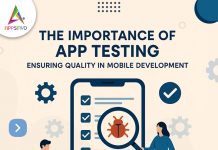Top 10 Mobile App Development Frameworks in 2025
1. Flutter
2. React Native
3. Xamarin
4. Ionic
5. Apache Cordova
6. NativeScript
7. SwiftUI
8. Kotlin Multiplatform Mobile (KMM)
9. Appcelerator Titanium
10. Unity
1. Flutter
Overview: Google developed Flutter, an open-source UI toolkit for creating natively built applications for mobile, web, and desktop from a single codebase.
Key features:
- Hot reload allows for quick iterations.
- A comprehensive range of pre-designed widgets.
- Strong community support and detailed documentation.
Use Cases: Ideal for developing visually appealing applications that provide a smooth user experience.
2. React Native
Key features:
- Code reuse for online and mobile platforms.
- Native components provide strong performance.
- A vast ecosystem of libraries and tools.
Use Cases: Ideal for apps requiring rapid development and cross-platform compatibility.
3. Xamarin
- Access to native APIs for iOS and Android.
- Excellent performance using native UI elements.
- Strong connection with Visual Studio.
Use Cases: Ideally suited for enterprise-level applications that require strong design and scalability.
4. Ionic.
Overview: Ionic is a popular open-source framework for developing applications for multiple platforms with web technologies such as HTML, CSS, and JavaScript.
Key features:
- An extensive library of UI components.
- Simple integration with Angular, React, and Vue.
- A robust community and plugin environment.
Use Cases: Ideal for hybrid projects that must run on multiple platforms using a single codebase.
5. Apache Cordova
Cordova is an open-source mobile development framework that lets you build mobile apps using regular web technologies.
Key features:
- A uniform JavaScript API allows you to access device functionalities.
- Large plugin library for improved functionality.
- Simple architecture allows for rapid app development.
Use Cases: Ideal for simple applications or those moving from the web to mobile.
6) NativeScript
- Overview: NativeScript lets developers build native mobile apps with JavaScript, TypeScript, or Angular.
Key features:
- Native APIs can be accessed directly without the use of wrappers.
- High performance thanks to native rendering.
- Strong support for Angular and Vue.
Use cases: Ideal for developers wishing to apply their web programming abilities to mobile applications.
7. Swift UI
Overview: SwiftUI, developed by Apple, is a framework to build user interfaces for all Apple platforms.
Key features:
- Declarative syntax for UI design.
- Integration of existing Swift codebases.
- Real-time previews enable rapid development.
Use Cases: Best suited for iOS applications that require a modern user interface and a smooth connection with Apple’s ecosystem.
8. Kotlin Multiplatform Mobile(KMM)
KMM enables developers to transfer code between Android and iOS applications using Kotlin.
Key features:
- Enables the exchange of business logic while utilising native UI.
- JetBrains provides strong support, as does the developing community.
- It integrates seamlessly with existing Android projects.
Use Cases: Ideal for teams that specialise in Kotlin and want to preserve native performance on all platforms.
9. Appcelerator Titanium
Overview: Titanium is an open-source framework for developing native JavaScript apps.
Key features:
- Access to native APIs and components.
- Capable of rapid prototyping.
- A diverse group of modules for increased functionality.
Use Cases: This is ideal for JavaScript developers who want to explore native apps.
10. Unity
- Overview: Although Unity is best known for game development, it is rapidly being utilised for building interactive applications across multiple platforms.
Key features:
- A powerful graphics engine designed for high-performance applications.
- Extensive asset store for rapid construction.
- Cross-platform support for games and simulations.
Use cases: Ideal for applications that require detailed graphics and animations, such as gaming or AR/VR experiences.












